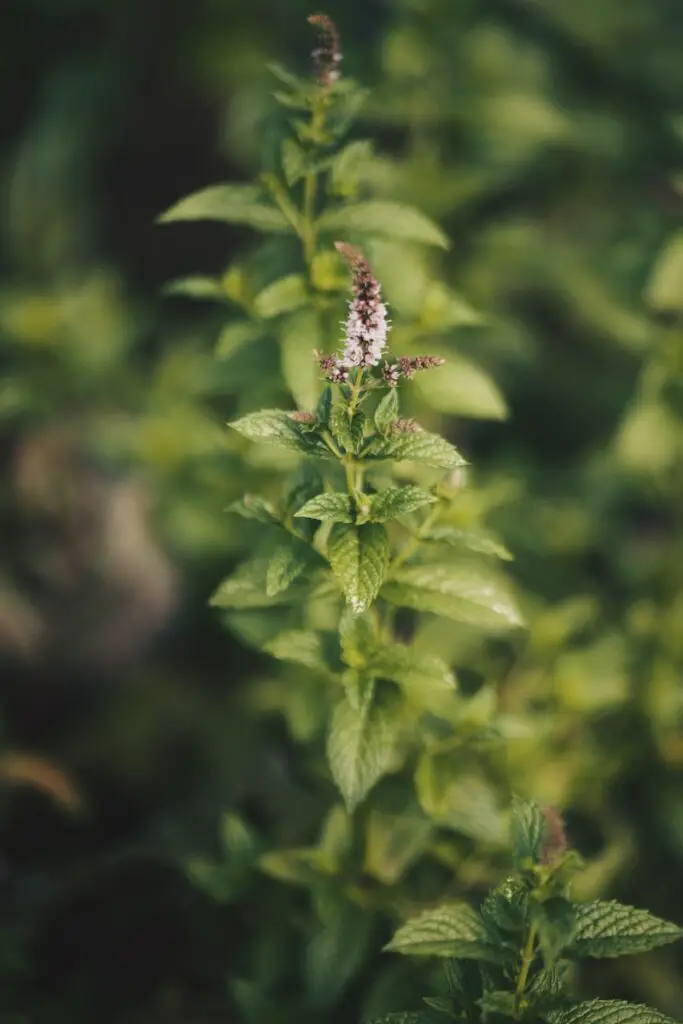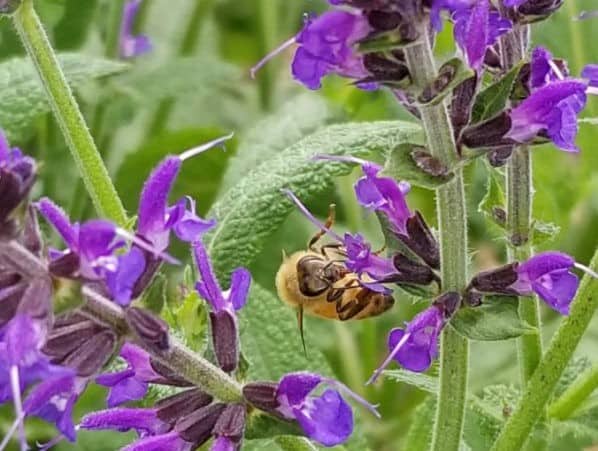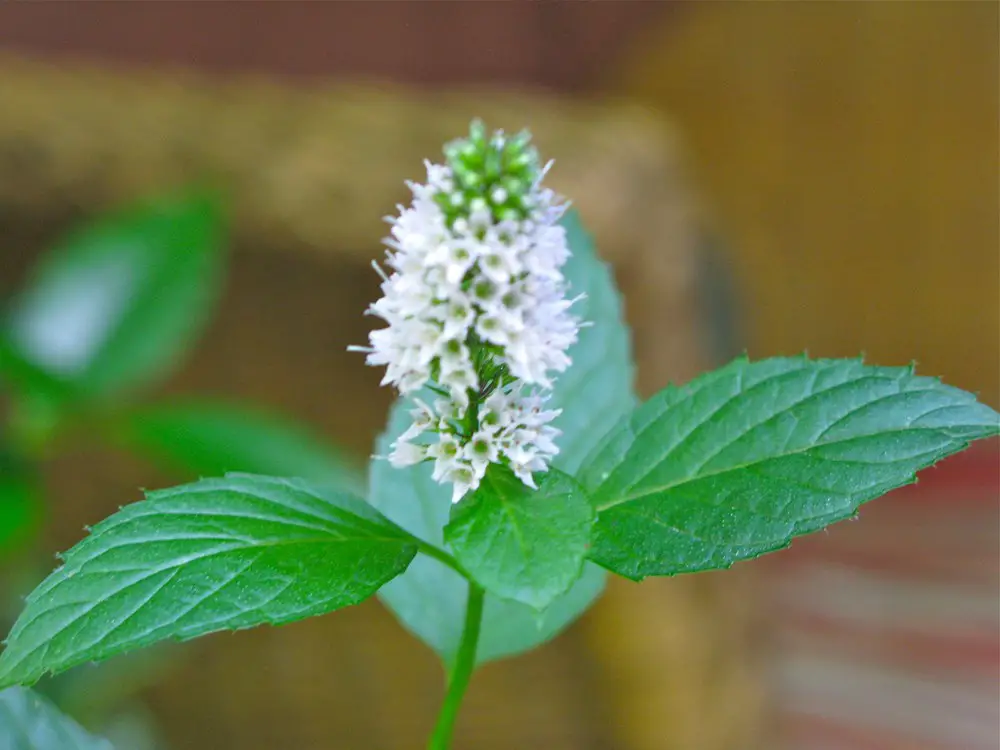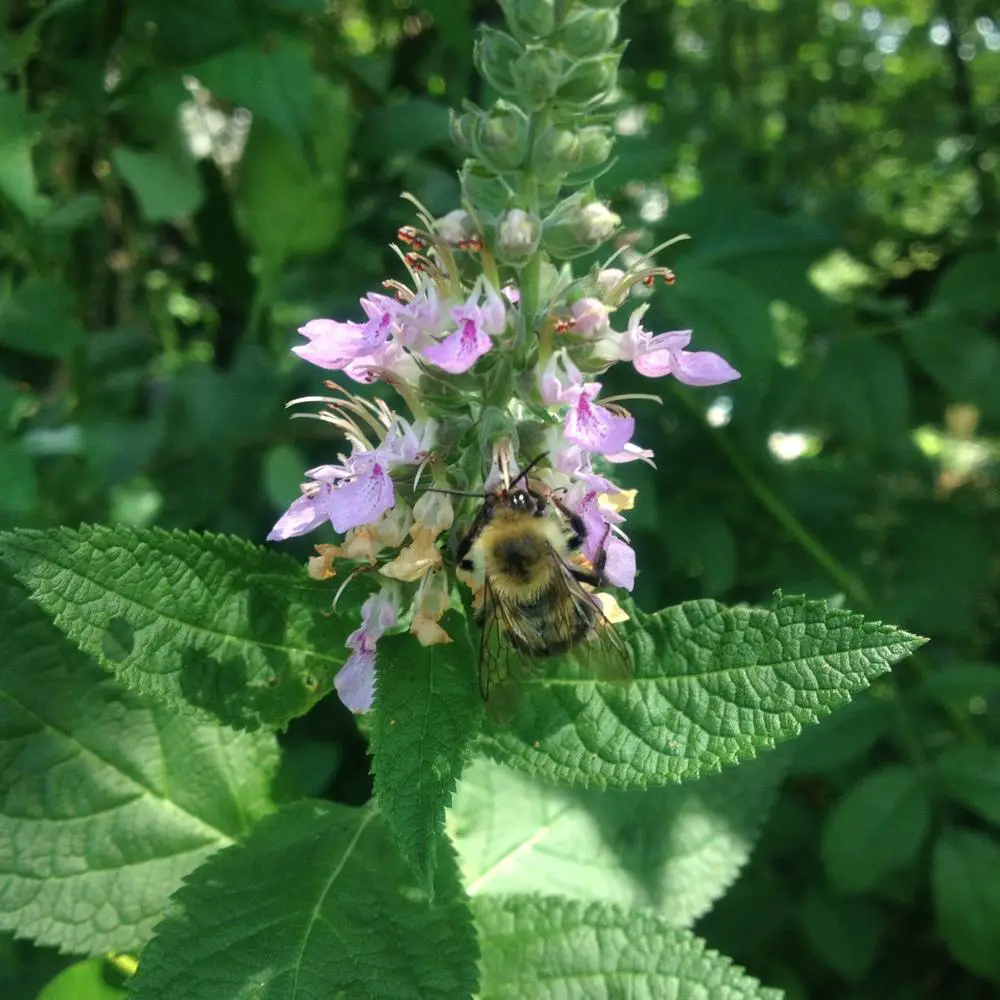
Mint is a popular herb that is known for its refreshing and invigorating aroma. Many people use mint in their cooking or as a natural remedy for various ailments. However, one question that often arises when it comes to mint is whether or not it flowers.
The answer to this question is yes, mint does flower. Mint plants are perennials, which means that they will grow back year after year. The flowers of the mint plant are small and come in a variety of colors, including white, pink, and purple. While the flowers may not be as showy as those of other plants, they are still an important part of the plant’s lifecycle.
There are many different species of mint, and each one may have slightly different flowering habits. However, in general, mint flowers in the late spring or early summer. The flowers of the mint plant are a sign that the plant is maturing and getting ready to produce seeds. While some gardeners may prefer to remove the flowers to encourage more leaf growth, allowing the plant to flower can also attract beneficial insects to the garden.
Table of Contents
Understanding Mint Flowers
Mint is a popular herb that is used in many culinary and medicinal applications. It is known for its refreshing flavor and aroma. Mint plants are known to produce flowers, which can add beauty to the plant and attract pollinators. In this section, we will explore the different aspects of mint flowers.
Identifying Mint Flowers
Mint flowers are small and delicate, with a tubular shape. They are typically arranged in clusters or spikes, which emerge from the leaf axils of the plant. Mint flowers can be easily identified by their distinct shape and arrangement. They are usually around 1/8 to 1/4 inch in size and can vary in color.
Colors of Mint Flowers
Mint flowers can come in a variety of colors, including purple, white, and pink. The most common color is purple, which is seen in many varieties of mint. White and pink flowers are less common but can still be found in some mint plants.
Purple Flowers

Purple flowers are the most common color in mint plants. They can range from light lavender to deep violet. Some popular varieties of mint with purple flowers include spearmint, peppermint, and chocolate mint.
White Flowers

White flowers are less common in mint plants but can still be found in some varieties. They are usually smaller than purple flowers and have a more delicate appearance. Some examples of mint plants with white flowers include apple mint and pineapple mint.
Pink Flowers

Pink flowers are the rarest color in mint plants. They are usually pale pink and have a soft, feminine appearance. Pink flowers can be found in some varieties of peppermint and spearmint.
Blooming and Mint Flowering
Mint plants usually bloom in late spring or early summer. The flowers can last for several weeks and attract pollinators such as bees and butterflies. Mint plants can continue to produce flowers throughout the growing season, depending on the variety and growing conditions.
In conclusion, mint flowers are a beautiful and important aspect of mint plants. They come in a variety of colors and can add beauty to any garden. By understanding the different aspects of mint flowers, you can appreciate the beauty and importance of these delicate blooms.
Cultivation of Mint
Growing Conditions
Mint is a hardy plant that can grow in a variety of conditions. It prefers full sun to partial shade and well-drained, fertile soil. Mint can be grown in containers or outdoors in a garden. It is important to ensure that the soil has good drainage and that the plants receive adequate water.
Planting Techniques
Mint can be grown from seeds or cuttings. If starting from seeds, they should be planted in a well-draining soil mix and kept moist until they germinate. Cuttings can be taken from an existing plant and rooted in water or soil. Mint plants should be spaced about 18-24 inches apart to allow for proper growth.
Care and Maintenance
Mint requires regular care and maintenance to thrive. It should be watered regularly and kept moist, but not waterlogged. Mint plants benefit from mulch to help retain moisture and suppress weeds. Fertilizer can be applied in the spring and summer to provide additional nutrients. Mint can be harvested throughout the growing season by cutting the stems just above a set of leaves.
Overall, mint is a relatively easy plant to grow and maintain. With proper growing conditions and care, it can provide a bountiful harvest of fresh leaves for culinary and medicinal uses.
Varieties of Mint
Mint is a popular herb that belongs to the family Lamiaceae. It is widely used in cooking, aromatherapy, and traditional medicine. There are several varieties of mint, each with its own unique flavor and aroma. In this section, we will explore some of the most popular and rare varieties of mint.
Popular Mint Varieties
Peppermint
Peppermint is one of the most popular varieties of mint. It has a strong, refreshing flavor and a cooling sensation. Peppermint is often used in teas, candies, and desserts. It is also used in aromatherapy for its invigorating and uplifting properties.
Spearmint
Spearmint is another popular variety of mint. It has a sweet, refreshing flavor and a milder aroma than peppermint. Spearmint is often used in cooking, especially in Mediterranean and Middle Eastern cuisines. It is also used in chewing gums, toothpaste, and mouthwashes.
Apple Mint
Apple mint, also known as woolly mint, has a fruity aroma and a sweet, minty flavor. It is often used in salads, fruit dishes, and beverages. Apple mint is also used in aromatherapy for its calming and soothing properties.
Chocolate Mint
Chocolate mint has a rich, chocolatey aroma and a sweet, minty flavor. It is often used in desserts, such as cakes, cookies, and ice cream. Chocolate mint is also used in aromatherapy for its relaxing and mood-enhancing properties.
Rare and Unique Mint Varieties
Pineapple Mint
Pineapple mint has a tropical aroma and a sweet, fruity flavor. It is often used in cocktails, fruit salads, and desserts. Pineapple mint is also used in aromatherapy for its energizing and uplifting properties.
Lemon Balm
Lemon balm, also known as Melissa officinalis, has a lemony aroma and a mild, sweet flavor. It is often used in teas, salads, and soups. Lemon balm is also used in aromatherapy for its calming and stress-relieving properties.
Lemon Mint
Lemon mint, also known as bergamot mint, has a citrusy aroma and a refreshing, minty flavor. It is often used in teas, salads, and sauces. Lemon mint is also used in aromatherapy for its uplifting and refreshing properties.
Water Mint
Water mint has a strong, minty aroma and a spicy, bitter flavor. It is often used in teas, sauces, and marinades. Water mint is also used in traditional medicine for its digestive and anti-inflammatory properties.
Variegated Mint
Variegated mint, also known as tricolor mint, has green and white leaves with a hint of purple. It has a sweet, minty flavor and is often used in salads and desserts. Variegated mint is also used in aromatherapy for its soothing and calming properties.
Pennyroyal
Pennyroyal has a strong, minty aroma and a bitter, pungent flavor. It is often used in teas, sauces, and seasonings. Pennyroyal is also used in traditional medicine for its digestive and insect-repelling properties. However, it should be used with caution as it can be toxic in large amounts.
In conclusion, there are several varieties of mint, each with its own unique flavor and aroma. Whether you prefer peppermint, spearmint, or a rare and unique variety, mint is a versatile herb that can be used in a variety of dishes and applications.
Uses of Mint
Mint is a versatile herb that has been used for centuries for its various benefits. It is a popular herb used in cooking, beverages, and medicinal purposes. Here are some of the most common uses of mint:
Culinary Uses
Mint is a popular herb used in cooking and adds a fresh flavor to many dishes. It is commonly used in salads, sauces, soups, and as a garnish for many dishes. Mint leaves can be used fresh or dried, and they are commonly used in lamb dishes. Mint is also used in many beverages such as tea, cocktails, and other drinks.
Medicinal Uses
Mint has a long history of medicinal use and is used to treat a variety of ailments. Mint tea is commonly used to soothe upset stomachs, and it is also used to relieve headaches and migraines. Mint has anti-inflammatory properties and can be used to relieve pain and swelling. It is also used to treat respiratory problems such as asthma and bronchitis.
Other Uses
Mint has many other uses besides culinary and medicinal purposes. It is commonly used in aromatherapy and is said to have a calming effect on the mind and body. Mint is also used in many beauty products such as shampoos, soaps, and lotions. It is used for its refreshing scent and its ability to soothe and cool the skin.
In conclusion, mint is a versatile herb that has many uses. It is commonly used in cooking, beverages, and medicinal purposes. Mint has a refreshing flavor and scent and is a popular herb used in many different cultures.
Mint in the Ecosystem
Mint as a Pollinator
Mint is not only a delicious herb but also an important plant for pollinators. Bees, butterflies, and other pollinators are attracted to the fragrant flowers of mint. The flowers are small and white or pinkish in color and bloom in the summer. Mint flowers provide nectar and pollen for pollinators, which helps them to survive and reproduce.
Mint flowers are particularly attractive to bees. Bees are important pollinators for many crops and wild plants, and their populations have been declining in recent years. Planting mint in your garden can help to support bee populations and other pollinators.
Mint as Ground Cover
Mint is also a useful plant for ground cover. It grows quickly and spreads easily, forming a dense mat of foliage that can help to suppress weeds. Mint prefers moist soil and partial shade, but can also tolerate full sun in cooler climates.
Mint is a good choice for areas where other plants struggle to grow, such as under trees or in shaded areas. It can also be planted as a border or edging plant, or in containers. However, mint can be invasive and may take over other plants if not kept in check.
In addition to its benefits for pollinators and as a ground cover, mint has many other uses. It is commonly used in cooking, as a medicinal herb, and as an ingredient in cosmetics and fragrances. Overall, mint is a versatile and valuable plant in the ecosystem.
Challenges in Growing Mint
Mint is a popular herb that is grown for its refreshing aroma and flavor. However, growing mint can be a challenge due to various factors such as pests, diseases, and stress. In this section, we will discuss some of the common challenges that gardeners face when growing mint.
Common Pests and Diseases
Mint is susceptible to various pests and diseases that can affect its growth and flavor. Some of the common pests that affect mint include spider mites, aphids, and whiteflies. These pests can cause damage to the leaves and stems of the plant, leading to stunted growth and reduced yields.
In addition to pests, mint can also be affected by various diseases such as rust and powdery mildew. Rust is a fungal disease that causes orange or brown spots on the leaves, while powdery mildew is a fungal disease that causes a white, powdery coating on the leaves.
Overcoming Growth Challenges
Growing mint can be a challenge, but there are ways to overcome these challenges and ensure a healthy and thriving plant. One way to overcome pest and disease challenges is to practice good plant hygiene. This includes removing any dead or diseased leaves and keeping the plant well-watered and fertilized.
Another way to overcome growth challenges is to grow mint indoors or in a contained environment. This can help to control pests and diseases and provide a stress-free environment for the plant to grow.
In conclusion, growing mint can be a challenge due to various factors such as pests, diseases, and stress. However, by practicing good plant hygiene and growing mint indoors or in a contained environment, gardeners can overcome these challenges and ensure a healthy and thriving plant.
Conclusion
In conclusion, it can be said that mint plants do flower. In fact, mint plants produce small, delicate flowers that bloom in the summer months. The flowers of the mint plant come in a variety of colors, including white, pink, and purple.
There are many species of mint plants, including the common garden mint, peppermint, and spearmint. Each species has its own unique characteristics, including the size and color of its flowers.
Mint plants are often used for medicinal purposes due to their high concentration of essential oils. The oils found in mint plants have been shown to have a variety of health benefits, including relieving digestive issues and reducing inflammation.
Overall, the mint plant is a versatile and useful plant that is easy to grow and maintain. Whether you are looking to add a pop of color to your garden or are interested in the medicinal properties of mint, this plant is definitely worth considering.